- Felisac
- August 30, 2023
- 6:44 am

John Doe
Answered on 6:44 am
Moving to 400G (400 Gigabit Ethernet) technology can bring a multitude of benefits for networks that need to effectively handle a steep increase in traffic demand, stemming primarily from video, mobile, and cloud computing services. Some of the essential benefits are:
Increased capacity and speed: 400G offers 4 times the bandwidth of 100G, greatly bolstering network capacity and throughput for data-intensive services and applications.
Efficiency and scalability: 400G is inherently more efficient because it can carry more information per transmission. This efficiency also provides future-proofing for providers as traffic demands grow.
Cost-effectiveness: Enable 2-4X lower cost and power/bit, reducing capex and opex. Even though the upfront capital expenditure might be higher, the total cost of operation can be reduced in the long run because you can move more data with fewer devices, leading to reductions in space, power, and cooling requirements.
Improved network performance: With greater speed and capacity, 400G technology reduces latency, providing an overall improvement in network performance. This is crucial for time-sensitive applications and can significantly enhance the user experience.
Support for higher bandwidth applications: Increase switching bandwidth by a factor of 4. Migrating from 100G to 400G systems increases the bandwidth per RU from 3.2-3.6T to 12.8-14.4T / RU. The rise in high-bandwidth applications, like Ultra High Definition (UHD) video streaming, cloud services, online gaming, and virtual reality (VR), require strong, stable, and fast network connections. 400G technology can provide the necessary support for these bandwidth-intensive applications.
Enables machine-to-machine communication: 400G technology is a powerful tool for enabling machine-to-machine communications, central to the Internet of Things (IoT), artificial intelligence, and other emerging technologies.
Supports 5G networks: The higher speed and capacity of 400G technology are ideal for meeting the demanding requirements of 5G networks, helping them to achieve their full potential.
Data Center Interconnect (DCI): For enterprises operating multiple data centers at multiple sites, 400G supports efficient and powerful data center interconnection, enhancing data transfer and communication.
Sustainability: 400G is more energy-efficient than its predecessors by providing more data transmission per power unit. This is a significant advantage considering the increasing global focus on sustainability and green technology.
Enable higher-density 100G ports using optical or copper breakouts. A 32 port 1RU 400G system enables 128 100GE ports / RU. This allows a single Top of Rack (TOR) leaf switch to connect to multiple racks of servers or Network Interface Cards (NICs).
Reduce the number of optical fiber links, connectors, and patch panels by a factor of 4 when compared to 100G platforms for the same aggregate bandwidth.
In conclusion, 400G technology presents a compelling solution for networks dealing with high traffic flows due to digital transformation trends. It builds the foundation for supporting the growing demand for data from businesses and consumers alike, making it an important tool in the era of 5G, and IoT.
People Also Ask
Active Connectors: LC, CS, SN, MPO, PC, APC
Active connectors are passive optical devices frequently used in conjunction with optical module interfaces. These connectors, which are attached to the optical side of a module, generally adhere to standardized processes to form universally accepted physical and performance interfaces, thereby enabling interoperability among various manufacturers. Standardization, as a process, involves
Unlock the Potential with a 2.5 GB Switch: The Ultimate Guide to Multi-Gigabit Networking
Traditional gigabit Ethernet is being replaced with multi-gigabit networking because modern computing and connectivity demands have outgrown it. This shift is driven by the need to lower cost and improve access to fast network performance—what is popularly termed as the 2.5 GB switch. You may be a tech aficionado looking
Choosing the Best 16-Port Gigabit Ethernet Switch for Your Home Network
Setting up an easy-to-use and fast home network is becoming simpler as new technology comes out. A 16-port Gigabit Ethernet switch streaming HD content, online gaming, or smart home device integration becomes a critical piece for wired connections across competing devices. Performance and budget features often contradict each other creating
NVIDIA Releases Silicon Photonics CPO Switch
During GTC 2025, NVIDIA released the NVIDIA Spectrum-X (based on the Ethernet standard) and NVIDIA Quantum-X (based on the InfiniBand standard) silicon photonic network switches, enabling AI factories to connect millions of GPUs across regions while significantly reducing energy consumption and operating costs. NVIDIA Silicon Photonics CPO The partners listed
How to Use the XGSPON ONU Stick SFP+
Fiber-to-the-Home (FTTH) technology is revolutionizing internet connectivity. However, the closed devices provided by internet service providers often restrict users’ freedom. If you have a router or switch with an SFP+ interface, such as the Ubiquiti Dream Machine Pro, Mikrotik CCR series, or an OPNsense device, the XGSPON ONU Stick SFP+
The Ultimate Guide to Choosing a 5-Port Gigabit Ethernet Switch for Your Home Network
An efficient home network system is the foundation of contemporary technology, facilitating the smooth operation of activities such as streaming, gaming, and home offices. Gigabit Ethernet routers are an integral component of the home network system, and a five-port gigabit ethernet switch marks the initial stage of network enhancement. Smaller
Related Articles
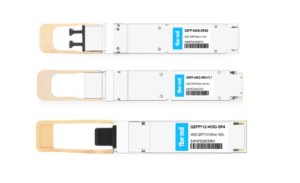
800G SR8 and 400G SR4 Optical Transceiver Modules Compatibility and Interconnection Test Report
Version Change Log Writer V0 Sample Test Cassie Test Purpose Test Objects:800G OSFP SR8/400G OSFP SR4/400G Q112 SR4. By conducting corresponding tests, the test parameters meet the relevant industry standards, and the test modules can be normally used for Nvidia (Mellanox) MQM9790 switch, Nvidia (Mellanox) ConnectX-7 network card and Nvidia (Mellanox) BlueField-3, laying a foundation for
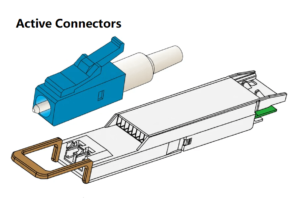
Active Connectors: LC, CS, SN, MPO, PC, APC
Active connectors are passive optical devices frequently used in conjunction with optical module interfaces. These connectors, which are attached to the optical side of a module, generally adhere to standardized processes to form universally accepted physical and performance interfaces, thereby enabling interoperability among various manufacturers. Standardization, as a process, involves

Unlock the Potential with a 2.5 GB Switch: The Ultimate Guide to Multi-Gigabit Networking
Traditional gigabit Ethernet is being replaced with multi-gigabit networking because modern computing and connectivity demands have outgrown it. This shift is driven by the need to lower cost and improve access to fast network performance—what is popularly termed as the 2.5 GB switch. You may be a tech aficionado looking
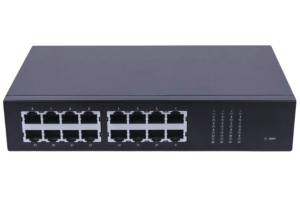
Choosing the Best 16-Port Gigabit Ethernet Switch for Your Home Network
Setting up an easy-to-use and fast home network is becoming simpler as new technology comes out. A 16-port Gigabit Ethernet switch streaming HD content, online gaming, or smart home device integration becomes a critical piece for wired connections across competing devices. Performance and budget features often contradict each other creating
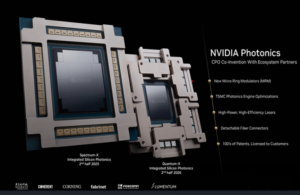
NVIDIA Releases Silicon Photonics CPO Switch
During GTC 2025, NVIDIA released the NVIDIA Spectrum-X (based on the Ethernet standard) and NVIDIA Quantum-X (based on the InfiniBand standard) silicon photonic network switches, enabling AI factories to connect millions of GPUs across regions while significantly reducing energy consumption and operating costs. NVIDIA Silicon Photonics CPO The partners listed
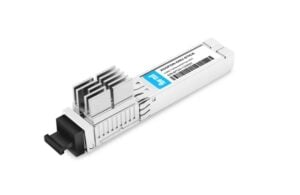
How to Use the XGSPON ONU Stick SFP+
Fiber-to-the-Home (FTTH) technology is revolutionizing internet connectivity. However, the closed devices provided by internet service providers often restrict users’ freedom. If you have a router or switch with an SFP+ interface, such as the Ubiquiti Dream Machine Pro, Mikrotik CCR series, or an OPNsense device, the XGSPON ONU Stick SFP+

The Ultimate Guide to Choosing a 5-Port Gigabit Ethernet Switch for Your Home Network
An efficient home network system is the foundation of contemporary technology, facilitating the smooth operation of activities such as streaming, gaming, and home offices. Gigabit Ethernet routers are an integral component of the home network system, and a five-port gigabit ethernet switch marks the initial stage of network enhancement. Smaller
